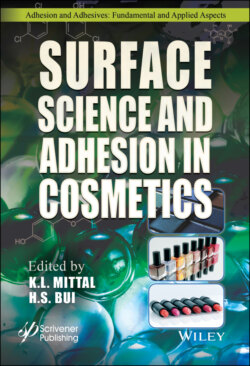Читать книгу Surface Science and Adhesion in Cosmetics - Группа авторов - Страница 85
3.12 UV-Cured Nail Gel Safety
ОглавлениеAs one can see in Figure 3.19 the UV nail gel technology is applied to the human nail in built-up layers. The base coat is primarily used to obtain adhesion to the human nail and to even out irregularities of the nail surface. The next layer (intermediate coat) is the color coat that can result in multiple number of shades. However, this layer (intermediate coat) can be used without pigmentation which results in a clear coat that exhibits the natural color of the nail. The final layer is the top coat and this ultimately is the performance layer of the nail. Concerns for safety of the UV nail gel technology can be seen in two specific areas; 1) the UV cure light exposure, and 2) acrylated oligomers, acrylated monomers and PIs used in the formulation of the UV nail gel technology. From the standpoint of the UV cure light technology a study [27] showed that the worst-case scenario was exposure to UV-A light source for 36 minutes per day which was far below the occupational exposure limits for UV radiation. The report showed that normal use of a UV nail gel lamp only exposed the consumer to 0.5% to 2.2% of the monthly allowable exposure limit to UV energy. These energy levels were 0.30 to 1.676 µW/cm2. The UV cure light units operated within the UV-A range of 350 to 400nm [27]. The formulation of the UV nail gel as shown in the previous section contains (meth) acrylate monomers. A recent study [28] found concerns with allergic contact dermatitis (ACD) due to the use of (meth) acrylate monomers in the nail gel formulations. They found that 241 patients tested over a three-year period had a positive patch reaction to the acrylate resin. In light of some of these ACD issues, the British Contact Dermatitis standard series of concerned chemicals has just added 2-hydroxyethyl methacrylate to this series. In addition, the studies found that both local and distant ACD can occur that would result in hyperkeratosis and fissuring of the finger pulp, lichenoid or psoriasiform eruptions, paronychia and nail dystrophy. Concerns were also shown that evaporation of the nail gel results in airborne ACD that could result in issues for the face, neck and ears [28].
